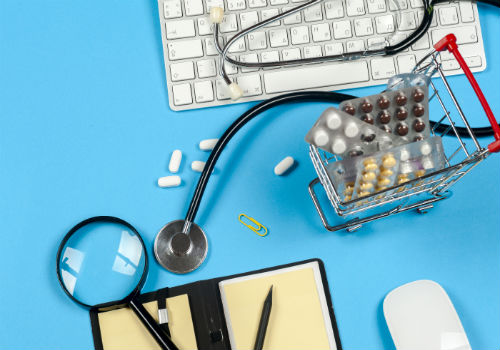Medical supply carts have revolutionized the way that care is delivered to patients in hospitals and doctors’ offices. Nurses and physicians can now access patient information at any time and read test results or send out prescriptions with just a few clicks. Medication carts play an important role in delivering care to patients in hospital and long-term care settings. They are easily customizable to fit the needs of the staff in any facility.

Medication carts have customization options that range from drawer and storage size choices to locking features, to peripheral options such as ID scanners. These options can optimize workflow for staff and allow them to spend more quality time providing direct care to their patients.
1.) Drawer size and configuration
Every workplace is different, and drawer sizes and configurations can differ according to the needs and uses of the facility’s staff. You can customize medication carts with large and small supply drawers, cassette drawers, and medication bins that work with most robotic fill machines.
Configuration can also be an important factor to consider when customizing your medical supply cart. If your staff works better with drawers side-by-side, or large drawers on the bottom and smaller drawers on the top, this can be configured in most customized medical carts.
2.) Customizable security options
Because mobile medical carts can be wheeled anywhere within a facility, it’s essential to ensure they are secured, especially if they need to be left somewhere while the nurse or doctor attends to patient care. Medication carts can be customized with secure locks that are manual or electronic.
Manual locks require keys, and for some facilities, this is the method that works best for them. Other facilities prefer to use electronic keypads to access medication carts. One of the more popular methods for accessing most electronics during a shift– including computers, medication carts, and access to other units– is a proximity or I.D. card. These cards can be easily and quickly swiped so that authorized personnel can gain access to vital information, meds, and areas of a facility swiftly.

3.) Peripheral options
Not all medication carts come equipped with a barcode scanner, which is often used now to scan a patient’s wristband before medication can be dispensed. In some facilities, nurses and doctors have to bring along a scanner with them, and they really have no place to put them on the cart.
A convenient peripheral option includes a barcode scanner holder so the medical computer cart can be wheeled right to the patient’s bedside. Other peripheral options that optimize workflow and minimize the amount of time tasks take include a sharps container, sanitizing wipe holders, printers, and trash baskets.
4.) Computer systems
Medication carts can usually be customized to fit the computer system your facility already uses. Whether you use a laptop, a PC, one monitor display, or two, these medication carts can be adjusted, so there is plenty of workspace available to accommodate these electronic health records systems.
Medication carts also offer a battery supply system to power these computers so they can be freely moved from patient room to patient room. Many of these battery systems are Hot Swap option batteries, which can easily be switched out when one battery begins to run low.
Typically, these batteries will last anywhere between 8-12 hours and can be customized to have a back-up battery on-board to provide even longer computing time. These battery systems can also be charged on-cart, or off-cart, depending on the size, configuration, and hours of your facility.
Final thoughts
If you are looking for ways to customize your medication carts, there are many options available for what style and configuration will work best for your healthcare environment. Optimizing efficiency while increasing patient satisfaction can be accomplished by the right customization options on all your medical supply carts.

